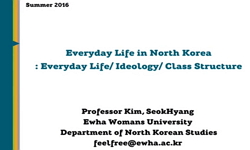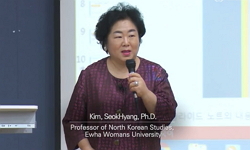The purposes of this paper are: 1) to examine and analyze how the two presidents’ policy goals in dealing with North Korea actually materialized; 2) to illustrate how these two Presidents implement their policy goals toward North Korea; 3) to discus...
http://chineseinput.net/에서 pinyin(병음)방식으로 중국어를 변환할 수 있습니다.
변환된 중국어를 복사하여 사용하시면 됩니다.
- 中文 을 입력하시려면 zhongwen을 입력하시고 space를누르시면됩니다.
- 北京 을 입력하시려면 beijing을 입력하시고 space를 누르시면 됩니다.



A Comparative Analysis of President Clinton and Bush's Handling of the North Korean Nuclear Weapons Program : Power and Strategy
한글로보기부가정보
다국어 초록 (Multilingual Abstract)
The purposes of this paper are: 1) to examine and analyze how the two presidents’ policy goals in dealing with North Korea actually materialized; 2) to illustrate how these two Presidents implement their policy goals toward North Korea; 3) to discuss the Congressional responses to the president’s policy goals toward North Korea; and 4) to provide comparative analysis of the two presidents’ handling of North Korea. This study shows that different Presidents have dealt with North Korean issues in different ways. Two such presidents, Bill Clinton and George W. Bush, tried at the beginning of their terms as president to ignore the brewing problems in North Korea. However, both were forced to solve the North’s nuclear issues early on in their respective administrations. Their decisions in dealing with North Korean nuclear capabilities help to define their early reputations as foreign policy makers. Yet, the domestic as well as international contexts that President Clinton and Bush faced were somewhat different. President Clinton maintains that the North’s nuclear crisis arose from North Korea’s security fears: Abandoned by its two Cold War patrons, economically bankrupt, and internationally isolated, the North Korean government saw the pursuit of nuclear weapons and ballistic missiles as the only path to survival and security for their regime. In this regard, Clinton’s actual efforts to resolve the issues surrounding the North’s nuclear program appeared ambiguous and inconsistent. This led to the temporary suspension of the North’s nuclear ambitions through an Agreed Framework. However, President Bush stuck to more of a hardnosed approach. He continues to demand a complete, verifiable and irreversible dismantling of the nuclear program first, before any provision of economic or humanitarian assistance is extended toward North Korea. Bush favors multilateral negotiations, which leads the DPRK to feel more isolated than before. Although the second six-party talks ended without a major breakthrough, it seems that all parties except the North think the meeting was successful in terms of lowering tensions in Korea. This case study demonstrates several observable features that characterize the president’s role in shaping North Korean policy. A president who wants to take a new approach to some element of U.S. policy can be caught between the diplomat’s desire for flexibility and the power of domestic political forces. The president can achieve success, but only if the new direction in policy finds acceptance on Capitol Hill.
목차 (Table of Contents)
- Introduction
- Theoretical Discussion: The Role of President in Making U.S. Foreign Policy
- President Clinton’s North Korean Policy: Engagement
- Policy Background
- Policy Goals
- Introduction
- Theoretical Discussion: The Role of President in Making U.S. Foreign Policy
- President Clinton’s North Korean Policy: Engagement
- Policy Background
- Policy Goals
- Policy Implementation
- Congressional Reaction
- North Korea’s Reaction
- President Bush and North Korea
- Policy Background
- Policy Goals
- Policy Implementation
- Congressional Reaction
- North Korea’s Reaction
- Comparative Analysis on Clinton and Bush’s North Korean Policy: Power and Strategy
- The Two President’s Definition of Situation
- The Two Presidents’ Policy Goals toward North Korea
- The Two Presidents’ Policy toward the North and Congressional Reactions
- The Two Presidents’ Policy Implementation and North Korean Reactions
- Concluding Remarks
동일학술지(권/호) 다른 논문
-
Division of Innovative Labor Between the U.S. and Japan in Asia-Pacific Technology Markets
- Center for International Studies, Inha University
- Kim, Taekwon
- 2004
- SCOPUS,KCI등재,SSCI
-
Comparing the Power of Korean and American Presidents
- Center for International Studies, Inha University
- Kim, Jaechun
- 2004
- SCOPUS,KCI등재,SSCI
-
- Center for International Studies, Inha University
- Paek, Tae Youl
- 2004
- SCOPUS,KCI등재,SSCI
-
The Decision Process of the Trusteeship in Korea, 1945-1946
- Center for International Studies, Inha University
- Shin, Bok-ryong
- 2004
- SCOPUS,KCI등재,SSCI




 RISS
RISS






